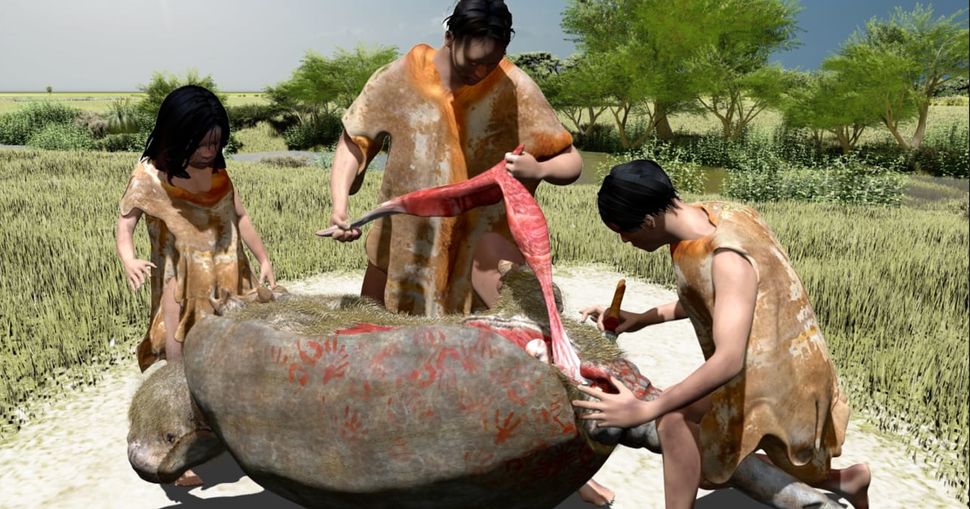Humans reached Argentina by 20,000 years ago -- and they may have survived by eating giant armadillos, study suggests
By Kristina Killgrove published 12 hours ago
The discovery of butchered bones belonging to a glyptodont, a giant relative of the armadillo, suggests that humans were living in Argentina 20,000 years ago.

A 3D rendering of three paleolithic humans butchering a mid-size mammal on a grassy area by a tree-lined river.
An artist's interpretation of how ice age humans may have butchered a glyptodont about 20,000 years ago in what is now Argentina. (Image credit: Damián Voglino, Museo de Ciencias Naturales A. Scasso (Colegio Don Bosco), San Nicolás de los Arroyos, Provincia de Buenos Aires, CC-BY 4.0)
Ancient humans may have butchered and eaten a giant armadillo-like creature around 20,000 years ago in what is now Argentina, a new study finds.
The discovery of the butchered bones supports a growing body of evidence that people spread throughout the Americas much earlier than previously assumed.
During the Late Pleistocene epoch (129,000 to 11,700 years ago), ice sheets and glaciers covered much of the planet, particularly during the Last Glacial Maximum, a period around 26,000 to 20,000 years ago when the ice age was at its height. While archaeologists previously thought that the first Americans arrived by journeying along a land bridge connecting Siberia with Alaska 13,000 years ago, archaeological sites discovered in North and South America in the last decade point to humans arriving in the region much earlier.
More:
https://www.livescience.com/archaeology/humans-reached-argentina-by-20000-years-ago-and-they-may-have-survived-by-eating-giant-armadillos-study-suggests


